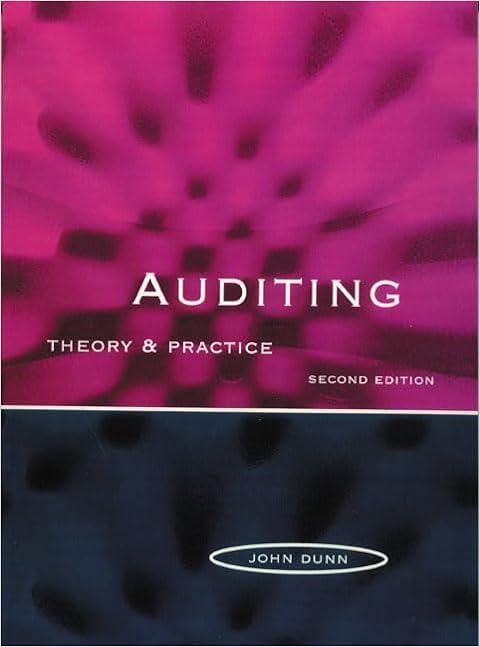Question
Capstone Activity Introduction The other three weeks of the Home Energy Module study energy flow and usage in our homes. In the RFactor activity, we
Capstone Activity Introduction The other three weeks of the Home Energy Module study energy flow and usage in our homes. In the RFactor activity, we observed that the material used in the construction of our homes has a tremendous impact on the rate at which heat flows through its exterior surfaces. In Home Audit and Home Analysis activities, we performed an energy audit of our homes to estimate the amount of money that it costs to power it. As you have seen during our studies, there are many factors that affect the cost of energy in our homes. The right choices of materials, appliances, heating and cooling system, and fuel source can greatly reduce the amount of money that you spend. The situation for most of us is that these decisions have already been made, since our homes have already been built and stocked with appliances and systems. For us, the question is "Can my home be modified so as to save energy and money?" After entering your data into the online calculator, you should have a gross estimate to the energy cost for your home (excluding lights and small appliances) in an average year. While the value may not be exact, it should be similar to what you pay if you remove the costs of running your lights, TV's, VCR, etc. What we would now like to know is if there are any changes that you could make to your home that would be of economic benefit. For instance, if you have single pane windows in your home, you could save energy by replacing these windows with double pane windows. Using the online calculator, you should be able to estimate how much energy and money this would save you each year. Of course, installing the windows will also cost you money. The amount of money that you would spend in making the change divided by the amount of money you would save each year will tell you how many years it would approximately take to pay off your investment. After that many years, the change would save you money. Saving energy often involves making an upfront investment and having the energy savings pay off over the long haul. In the National Public Radio segment below, the energy efficiency of home appliances and their sales are examined. See if any of the issues mentioned relate to your willingness to make similar investments in energy efficiency in your home. Analysis of Changes: In this module's Capstone Activity, you will perform an economic analysis of three home improvements that could be performed on your home. You will determine how many years it would take to pay off your investment, and decide whether these scenarios would be economically feasible. If you rent, pretend that you own the property in order to answer these questions. The proposed changes must be substantial (e.g., installing more energy efficient windows or doors, improving insulation, etc.), and cannot include lifestyle changes like altered thermostat settings or reduced appliance usage. Describe the changes in detail on the Capstone Activity sheet. To aid you in this process, you might find it useful to visit the Energy Savers web site from the U.S. Department of Energy. You will need to provide supporting evidence to show that the estimated cost of making each improvement is reasonable. If you propose to do the work yourself (and do so only if you possess such skills), then you will need to provide the prices of the required materials from a local home-improvement store, listing the specific items and the store location (feel free to attach clippings from store circulars showing the items and prices). If the proposed work is to be done by a professional, you must provide an estimate from an independent, home improvement store-affiliated, or online contractor. You can obtain an estimate for select home improvements with the ImproveNet web site's Estimators function. Once you know what it will cost, determine the amount of money that would be saved with each home improvement. Do this by running the Home Energy Analysis calculator with the improvement, and then compare the sum of your annual energy costs before (using your initial run of the calculator from Exercise 3) and after the improvement. Based on the cost of the improvement and annual energy savings, calculate the number of years required to recoup the costs of the improvement in reduced energy use. Attach printouts of the calculator for each of the three proposed changes to provide evidence of the cost savings through greater energy efficiency. Once your three analyses are complete, answer the remaining questions on the Capstone Activity sheet.
1. Describe in detail the three proposed changes below, list the cost of each and the annual savings, and calculate the payback time in years. Attach all supporting documentation (prices, estimates, calculator runs) to this sheet. Scenario 1: Savings/year = $_________ Cost = $________ Payback time = ____ years Description of change:
Scenario 2: Savings/year = $_________ Cost = $________ Payback time = ____ years Description of change:
Scenario 3: Savings/year = $_________ Cost = $________ Payback time = ____ years Description of change:
Analysis: Compare/contrast the three scenarios that you have listed. Do any of them make economic sense to perform? Why or why not? Which of them would be the most feasible, and why?
Step by Step Solution
There are 3 Steps involved in it
Step: 1

Get Instant Access to Expert-Tailored Solutions
See step-by-step solutions with expert insights and AI powered tools for academic success
Step: 2

Step: 3

Ace Your Homework with AI
Get the answers you need in no time with our AI-driven, step-by-step assistance
Get Started


